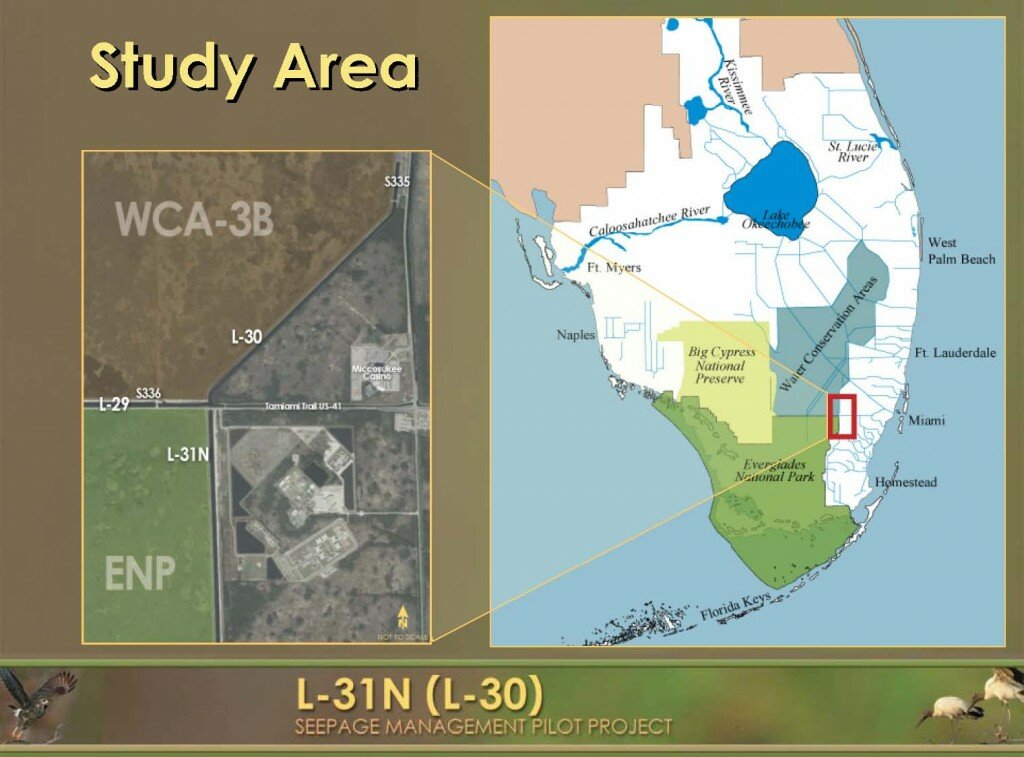Everglades Restoration Momentum Continues with New Federal-State Agreement
 Building on historic agreements to advance construction on Everglades restoration projects, the South Florida Water Management District (SFWMD) Governing Board and the U.S. Army Corps of Engineers recently approved another key Project Partnership Agreement to test technology for preserving clean water in Everglades National Park. If proven effective, technology developed during the pilot project will significantly benefit Everglades restoration and water quality improvement efforts in the park as well as beyond its boundaries.
Building on historic agreements to advance construction on Everglades restoration projects, the South Florida Water Management District (SFWMD) Governing Board and the U.S. Army Corps of Engineers recently approved another key Project Partnership Agreement to test technology for preserving clean water in Everglades National Park. If proven effective, technology developed during the pilot project will significantly benefit Everglades restoration and water quality improvement efforts in the park as well as beyond its boundaries.
“Working with our federal partners, the State of Florida and the District have been leaders in developing the tools and technology to restore America’s Everglades,” said SFWMD Governing Board Chairman Eric Buermann. “This pilot project promises to significantly advance restoration efforts in Everglades National Park and will provide valuable knowledge to benefit the broad effort to revive the River of Grass.”
Retaining clean water in the Everglades requires controlling and managing seepage of water from the wetlands. This is integral to success of the Comprehensive Everglades Restoration Plan (CERP). The L-31 North (L-30) Seepage Management pilot project will help to identify the appropriate technology that will prevent clean water from seeping out of Everglades National Park through South Florida’s porous underground rock layers. A second goal is to help retain clean water in Water Conservation Area 3B in Miami-Dade County — an area of the remnant Everglades, which has the highest seepage rate in the area.
“The pilot project was developed with extensive input from the public and numerous stakeholders,” said Ken Ammon, P.E., SFWMD Deputy Executive Director – Everglades Restoration and Capital Projects. “Experience gained from this project will have far-reaching benefits and moves us closer to achieving restoration goals to protect the Everglades and South Florida’s environment.”
The pilot project will test two structural seepage reduction technologies — specifically, steel sheet pile and a slurry wall — while also testing the ability to seasonally manage seepage flows through pumping operations to create a “hydraulic barrier.”
“Reducing seepage from the Everglades is vital to its restoration, but accomplishing this is no easy task. It’s not simply a matter of installing a wall that stops all easterly flow out of the park,” said Stu Appelbaum, U.S. Army Corps of Engineers Jacksonville District Deputy for Restoration Program Management. “We have to manage and control for variable flow rates via a system of features. That’s why this pilot test is so important. We’re committed to protecting and restoring the Everglades, so we will look at how different strategies perform before we proceed with larger scale implementation of any strategy.”
The slurry wall technology is similar to the technology now being used by the Corps to reduce seepage from portions of the Herbert Hoover Dike surrounding Lake Okeechobee.
The Project Partnership Agreement allows the Corps to award a contract for construction and testing of the pilot project, at an estimated cost of approximately $9.3 million using federal stimulus funding. The effort was also made possible by the landmark August 2009 Master Agreement between the SFWMD and the Corps.
Laying the groundwork for Everglades restoration for decades to come, the Master Agreement serves as an umbrella accord between the state and federal partners that governs all CERP projects. In turn, each CERP project requires a Project Partnership Agreement. The Master Agreement was also an essential step necessary for the Corps to begin restoration construction with an initial infusion in 2009 of approximately $115 million in congressional appropriations.
The Comprehensive Everglades Restoration Plan (CERP) is a framework for restoring, protecting and preserving the water resources of central and southern Florida. CERP is a 50-50 partnership between the State of Florida and the federal government. The State of Florida and the South Florida Water Management District have invested approximately $2.4 billion toward this effort, including approximately $300 million in construction. Through June 30, 2010, 60 percent — or approximately 234,853 acres — of the estimated lands needed to implement CERP have been acquired.
For more information, visit www.sfwmd.gov/everglades
Related posts:
- SFWMD Begins Project to Restore Florida Bay, Everglades
- New project helps Everglades Restoration plan
- Construction Continues on Project to Clean Everglades Water
- SFWMD Highlights a Year of Significant Restoration Progress
- 2010 SFWMD Budget Reflects Continued Commitment to Ecosystem Restoration
Short URL: https://browardnetonline.com/?p=9447



